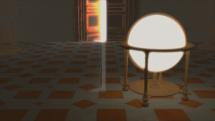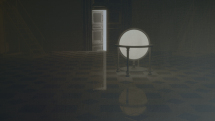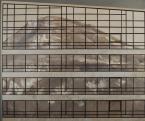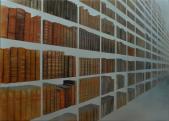2024. April 25. Thursday
Museum Kiscell - Municipal Picture Gallery Budapest - Budapest
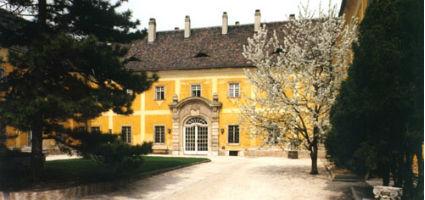 |
Address: 1037, Budapest Kiscelli utca 108.
Phone number: (1) 388-7817, (1) 250-0304
E-mail: fovarosi_keptar@mail.btm.hu
Opening hours: 01.04-31.10.: Tue-Sun 10-18
01.11-31.03.: Tue-Sun 10-16 |
The exhibition has closed for visitors.
2015.06.10. - 2015.09.20.
Museum tickets, service costs:
|
Ticket for adults
|
900 HUF
|
|
|
Ticket for students
|
450 HUF
|
|
|
Group ticket for students
|
350 HUF
|
|
|
Ticket for pensioners
|
450 HUF
|
|
|
Ticket for families
|
1300 HUF
|
/ family
|
|
Photography
|
500 HUF
|
|
|
Video
|
1500 HUF
|
Attila Kondor's interest is somewhere on the specific borderline of philosophy and fine arts According to him, arts can be a kind of spiritual practice tool for philosophical contemplation.The Ways of Attention includes paintings and animations and therefore follow the processes of the vision of a thinker. A painting is born from the focus of creative attention and is to serve the focus of the audience's attention.
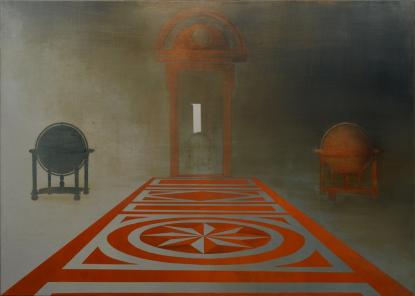
This centre of numerous mental and physical movements is still. The lack of movement suggests a lack of time: every time we return to an image, it always seems the same. Its sameness is not some dead numbness but imprint of countless former mental and physical motion. Thoughts, realizations, feelings that were made visible by the conscious or instinctive moves of painting. While capturing a painting these acquiring and active senses in a peculiar interplay is re-activated.The installed work of art located in the grandiose church space of the Kiscell Museum the process described above seem to be turning around as animation is a possibility for us to follow rhythm unfolding in time and space. The primary reason for our interest in reviving, animating a picture is to make the painting and the coefficients of unseen forces in - the attention, the concentration, imagination, visualization and conscious imagination - become transparent.
This kind of self-reflection leads the spectators back to the issues of the origins through the examination of the origins of art. This is suggested by the two meanings of the title 'Ontogenesis ', the compound word has Greek origins and means "creation of life". In the natural sciences, "ontogeny", however, specifically means .the science that studies living organisms. The three-channel painting film is displayed on three decisive points of the Temple Square. The visitors enter the exhibition and sees of the images emerging on the sidewall. Instead of the usual cuts, the screening continues on another point of Temple. Following this logic, the work of art unfolds during individual and parallel screenings. Similar to previous works, the short movie also serves as cyclic loop form.
Multichannel painting animation provides the possibility for us to extend the narrative of a conventional one-direction mode of film into various directions. With this, we can demonstrate parallel processes, those that are cohesive, or aiming further from one another. The use of variable formats allows us to incorporate the philosophical and theological connotations of the horizontal and vertical directions in the work.

This centre of numerous mental and physical movements is still. The lack of movement suggests a lack of time: every time we return to an image, it always seems the same. Its sameness is not some dead numbness but imprint of countless former mental and physical motion. Thoughts, realizations, feelings that were made visible by the conscious or instinctive moves of painting. While capturing a painting these acquiring and active senses in a peculiar interplay is re-activated.The installed work of art located in the grandiose church space of the Kiscell Museum the process described above seem to be turning around as animation is a possibility for us to follow rhythm unfolding in time and space. The primary reason for our interest in reviving, animating a picture is to make the painting and the coefficients of unseen forces in - the attention, the concentration, imagination, visualization and conscious imagination - become transparent.
This kind of self-reflection leads the spectators back to the issues of the origins through the examination of the origins of art. This is suggested by the two meanings of the title 'Ontogenesis ', the compound word has Greek origins and means "creation of life". In the natural sciences, "ontogeny", however, specifically means .the science that studies living organisms. The three-channel painting film is displayed on three decisive points of the Temple Square. The visitors enter the exhibition and sees of the images emerging on the sidewall. Instead of the usual cuts, the screening continues on another point of Temple. Following this logic, the work of art unfolds during individual and parallel screenings. Similar to previous works, the short movie also serves as cyclic loop form.
Multichannel painting animation provides the possibility for us to extend the narrative of a conventional one-direction mode of film into various directions. With this, we can demonstrate parallel processes, those that are cohesive, or aiming further from one another. The use of variable formats allows us to incorporate the philosophical and theological connotations of the horizontal and vertical directions in the work.

